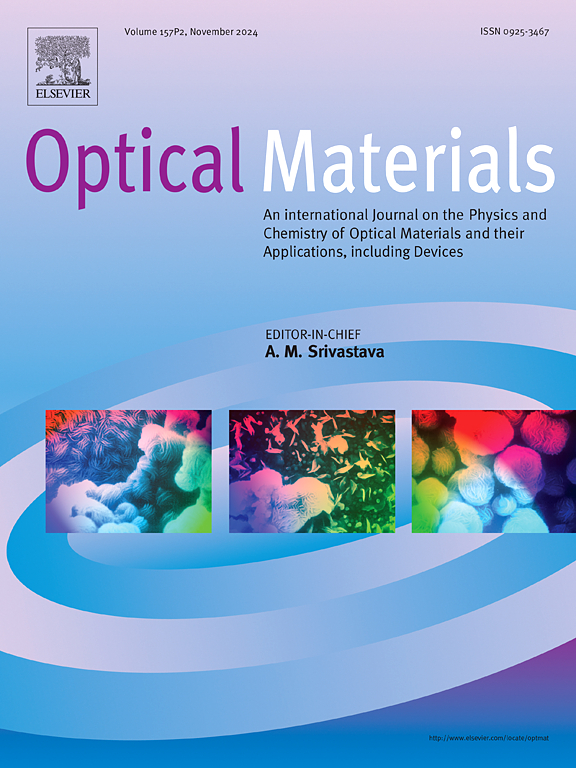Blue perovskite light-emitting diodes with ultra-low efficiency roll-off through synergistic PVK incorporation and antisolvent treatment
IF 3.8
3区 材料科学
Q2 MATERIALS SCIENCE, MULTIDISCIPLINARY
引用次数: 0
Abstract
Metal halide perovskites have garnered significant attention as next-generation luminescent materials due to their exceptional properties, such as narrowband emission and solution processability. PPA₂(Rb₀.₇₅Cs₀.₂₅)Pb₂Br₇ stands out as a promising wide-bandgap blue perovskite, whereas its deep valence band maximum hinders efficient radiative exciton recombination at the interface with the carrier transport layer. Here, we systematically investigated the effect of the poly-N-vinylcarbazole (PVK) interface and antisolvent treatment on the performance of PPA₂(Rb₀.₇₅Cs₀.₂₅)Pb₂Br₇-based blue devices. Various antisolvent treatments and PVK concentrations were optimized, significantly improving perovskite film quality. Crucially, PVK, serving as both a hole transport and electron-blocking layer, was studied with optimized antisolvent treatment to improve perovskite crystallization and enhance charge transport. Consequently, the blue perovskite light-emitting diode achieved a more than 10-fold improvement in external quantum efficiency, with an exceptionally low efficiency roll-off of only 4 % across a broad current density range from 3.6 to 100 mA cm⁻2.

通过掺入 PVK 和防溶剂处理的协同作用,实现超低效率的蓝色过氧化物发光二极管
本文章由计算机程序翻译,如有差异,请以英文原文为准。
求助全文
约1分钟内获得全文
求助全文
来源期刊

Optical Materials
工程技术-材料科学:综合
CiteScore
6.60
自引率
12.80%
发文量
1265
审稿时长
38 days
期刊介绍:
Optical Materials has an open access mirror journal Optical Materials: X, sharing the same aims and scope, editorial team, submission system and rigorous peer review.
The purpose of Optical Materials is to provide a means of communication and technology transfer between researchers who are interested in materials for potential device applications. The journal publishes original papers and review articles on the design, synthesis, characterisation and applications of optical materials.
OPTICAL MATERIALS focuses on:
• Optical Properties of Material Systems;
• The Materials Aspects of Optical Phenomena;
• The Materials Aspects of Devices and Applications.
Authors can submit separate research elements describing their data to Data in Brief and methods to Methods X.
 求助内容:
求助内容: 应助结果提醒方式:
应助结果提醒方式:


